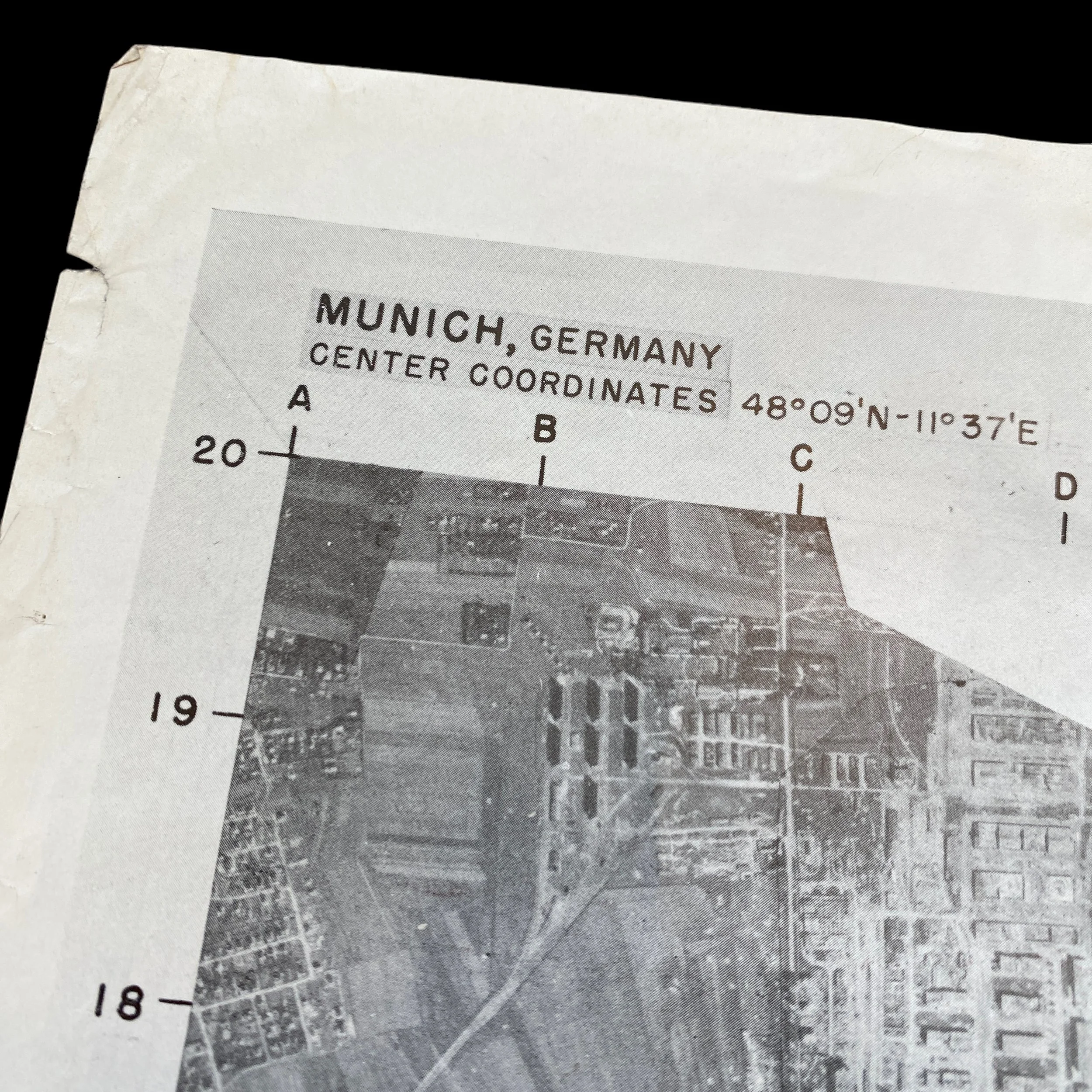VERY RARE! WWII 1945 Munich Germany 15th Air Force B-17 B-24 Bomb Group Target Air Raid Mission Map

























































VERY RARE! WWII 1945 Munich Germany 15th Air Force B-17 B-24 Bomb Group Target Air Raid Mission Map
Comes with hand-signed C.O.A.
DOUBLE-SIDED
This specific target map is historically documented as being used on the 15th Air Force attack in 1945:
“The only 15th AF mission to Berlin was on 24 March 1945 when 666 bombers struck the capital, Munich, and other German targets, as well as Czechoslovakia. The Berlin force was attacked by Me 262 jets that inflicted losses (one bombers and five fighters) while the Mustangs claimed eight jets downed - actual Luftwaffe records show only 3 x Me 262's lost in this engagement. The 47th BW and 55th BW fragged Fliegerhorst Neuburg damaging / destroying 54 x Me 262A-1’s from III./KG (J) 54, 304th BW attacked Fliegerhorst Münich-Riem destroying 13 x Me 262's. The NASM's Me 262 shows a claim credit for a B-17 shot down this date.”
The bombing of Munich (Luftangriffe auf München) took place mainly in the later stages of World War II. Munich was, and is, a significant German city, as much culturally as industrially. Augsburg, thirty-seven miles to the west, was a main centre of diesel engine production (and still is today), and was also heavily bombed during the war. Although some considerable distance from the United Kingdom, Munich is not a difficult city to find from the air, mainly due to its size, and possibly its proximity to the Austrian Alps to the south-east as a visual reference point. Munich was protected (initially) by its distance from the United Kingdom. After a small air raid in November 1940 the city got little attention from bombers until 1944.
The Royal Air Force Bomber Command would run attacks at night and the United States Army Air Force squad would run attacks on the Germans during the daytime. The RAF Bomber Commander felt that if they dispatched over 1,000 aircraft each night against the German objectives, it would destroy the industry of the city in hours and then the invasion of Europe would be unnecessary. In one night of bombing, over 1,000 aircraft used over 2,000 tons of bombs on Munich, destroying over 13,000 homes.
In the daylight raids by the United States Army Air Force squads, had no protection of the fighter escorts like the Royal Air Force squads did. These long distance raids were eventually abandoned because of the loss of life and airplanes.
During World War II, the United States conducted numerous aerial bombing raids on Germany, including the city of Munich. One specific mission was the bombing of Munich on April 24, 1944, which was part of a larger campaign to disrupt German transportation and communication networks. The target charts used in these missions were essential in ensuring that the bombs were dropped accurately and on target. This specific map was used by the 15th Air Force.
The bombing of Munich on April 24, 1944, was carried out by the US Eighth Air Force. The mission involved over 600 bombers, which dropped over 2,000 tons of bombs on the city. The target of the raid was the marshaling yards in Munich, which were a key transportation hub for the German military. The bombing was successful in disrupting German transportation and communication networks, but it also caused significant damage to the city and civilian casualties.
Target charts were essential in ensuring that the bombs were dropped accurately and on target. These charts provided detailed information about the target, including its location, size, and surrounding terrain. They also included information about the type of bombs to be used, the altitude at which the bombs should be dropped, and the direction and speed of the wind. Pilots and navigators used these charts to guide them to the target and ensure that the bombs were dropped on the intended target.
The use of target charts was critical in the success of the bombing raids on Munich and other German cities during World War II. Without these charts, it would have been much more difficult to accurately target military and industrial sites, and the risk of civilian casualties would have been much higher.
In conclusion, the US aerial bombing raids on Munich, Germany, during World War II were part of a larger campaign to disrupt German transportation and communication networks. The use of target charts was essential in ensuring that the bombs were dropped accurately and on target, and this played a critical role in the success of the bombing raids. While the bombing of Munich caused significant damage to the city and civilian casualties, it was seen as a necessary part of the war effort at the time.